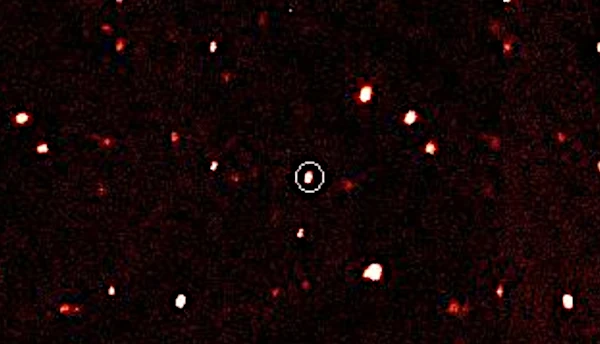
Discovered in 2005 by the team of Mike Brown (Caltech), Eris is the most massive known dwarf planet, with a mass 27% greater than Pluto's. Located in the scattered disk, a region beyond the Kuiper Belt, its eccentric orbit (perihelion at 37.9 AU, aphelion at 97.6 AU) makes it an extreme trans-Neptunian object. Its discovery directly contributed to Pluto's reclassification as a dwarf planet by the International Astronomical Union (IAU) in 2006.
Eris has a diameter of 2,326 km (slightly smaller than Pluto) but a mass of 1.66 × 1022 kg, or 0.28% of Earth's mass. Its high density (≈ 2.52 g/cm3) suggests an internal composition dominated by silicate rocks (70%) and a crust of water ice and methane (30%). The temperature on its surface is around -230 °C, making Eris one of the coldest objects in the solar system.
N.B.:
Eris' surface is covered with a thin layer of methane ice, which partially sublimates as it approaches perihelion, creating a tenuous and temporary atmosphere. This dynamic is similar to that observed on Pluto, but on a much smaller scale.
Geophysical models indicate that Eris is differentiated: a dense rocky core (radius ≈ 1,200 km) would be surrounded by a water ice mantle (≈ 100 km thick), itself covered by a crust of volatile ice (methane, nitrogen). This structure suggests a geologically active past, possibly marked by episodes of cryovolcanism, although no direct evidence has been observed to date.
Eris meets the IAU's three criteria for a dwarf planet:
Unlike classical planets, Eris has not "cleared" its orbit, a key criterion that distinguishes it from the eight planets of the solar system.
Eris has a single natural satellite, Dysnomia (diameter ≈ 700 km), discovered in 2005. Its nearly circular orbit (period of 15.8 days) and inclination suggest formation by giant impact, similar to the Earth-Moon system. The study of Dysnomia has made it possible to specify Eris' mass via Kepler's laws, confirming its status as the most massive dwarf planet.
Eris is a primordial object, preserved since the formation of the solar system 4.5 billion years ago. Its study provides valuable clues about:
Future space missions (such as those planned for Kuiper Belt objects) could reveal unprecedented details about its geology and thermal history.
| Characteristic | Eris | Pluto | Sedna |
|---|---|---|---|
| Diameter (km) | 2,326 | 2,377 | ≈ 1,000 |
| Mass (×1021 kg) | 16.6 | 13.0 | ≈ 0.1 |
| Density (g/cm3) | 2.52 | 1.85 | ≈ 2.0 |
| Orbital period (years) | 557 | 248 | ≈ 11,400 |
| Surface temperature (°C) | -230 | -229 | -240 |
| Atmosphere | Tenuous (sublimated methane) | Nitrogen/methane (seasonal) | None detected |
Sources: NASA - Eris in detail, Brown et al. (2005), Science.